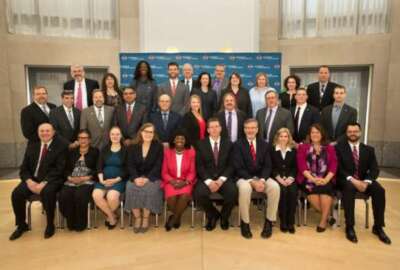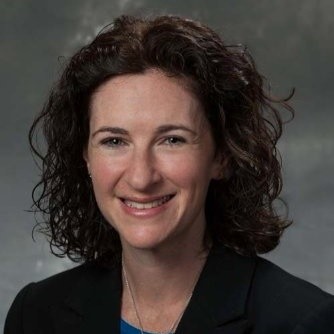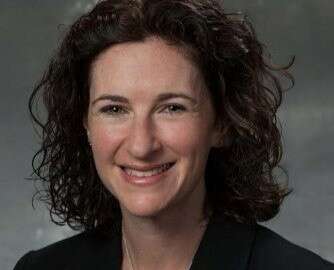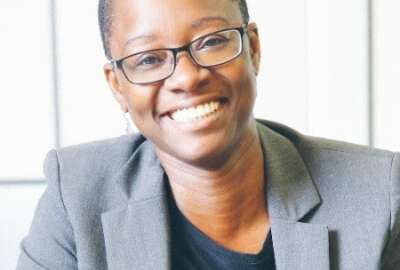
VA digital service team not resting on laurels, plans to continue to simplify online experience
Marcy Jacobs the executive director of the digital service at the Veterans Affairs Department, was the first member of the U.S. Digital Service to win a Service to...
Best listening experience is on Chrome, Firefox or Safari. Subscribe to Federal Drive’s daily audio interviews on Apple Podcasts or PodcastOne.
Calling it a surreal moment, Marcy Jacobs, the executive director of the digital service at the Veterans Affairs Department, accepted her Service to America Medal Tuesday night.
Jacobs started the effort three years ago to change the way more than 40 million veterans and their families interact online with the VA.

Jacobs said the SAMMIES recognition is about more than just improving the Vets.gov site.
“What’s really cool about getting this type of recognition is that it shines a light on what is possible in government. Really all of these SAMMIES shine a light on these great stories,” Jacobs said in an interview. “I think especially with technology projects and thinking about what the digital service has been able to accomplish, it really highlights that a very small group of people can have a really big impact that affects 22 million veterans.”
VA Secretary Robert Wilkie said at the awards gala, sponsored by the Partnership for Public Service in Washington, D.C. that as customer service is the agency’s prime directive, the Vets.gov digital service team has embodied that call by making the users their top priority.
Over the course of the last three years, Jacobs said a team of 80 people across the VA have talked to more than 6,000 customers to simplify the way veterans find and apply for benefits and services.
“It’s amazing how much user research we’ve been able to do. It’s actually harder than you would think to recruit the right people. We are constantly looking for people to participate,” she said. “Our research takes a lot of different flavors. Some of it is looking through web logs and call centers what are the questions or pain points they have. Some of it is looking at a specific tool and seeing where they are getting stuck, frustrated or confused. Did they even know where to find the tool when we said fill out this form? Some of it is really formative research in talking to people and understanding the pain points they are having and that may come out in lots of different ways.”
The digital services team also does “tree” testing where users move through taxonomies of information or navigation structures to make sure they are providing information in the best way possible.
VA says that research has led to a host of better user experiences:
- 40,000 veterans view their personalized homepage per day;
- 180,000 veterans have used their personalized homepage to check the status of their claims and appeals (as of July 2018);
- 700 percent increase in online scheduling of appointments;
- 18 million text message appointment reminders distributed;
- 100,000 missed appointments avoided;
- 4 million My HealtheVet account holders accessing benefits for the first time with this new login;
- 340,000 veteran views of personalized homepage in just two months;
- 50,000 contact information on updates processed digitally in two months;
- 53,000 veterans viewing the new appeals status tracker.
“A lot of what we do is start with what is the thing that already exists and how is that making sense or not making sense to the people. There are a lot of times we think we have iterated in a good direction and then we put that in front of people,” Jacobs said. “There is something around the disability question that is currently part of the claims process where there is a pick list of 800 different disabilities to pick from. It’s not a great experience. We thought that we’d come up with something better, and it did not test better. So we did a disability claims workshop with veteran service organizations, with people who adjudicate claims and really tried to sort and make sense of 800 different contentions. How do you organize that into something that makes sense?”
The digital service team at VA now is getting ready to take the vets.gov modernization effort one step further.
By Veterans Day, VA plans to integrate and continue to simplify all of its websites into VA.gov portal.
“We are really trying to simplify the digital ecosystem. There are way too many sites. It’s confusing for people to navigate. They really have to understand how VA is structured to understand which site to go to and figure out which form to fill out. That’s not what we want to be asking of our veterans,” Jacobs said. “We are shifting the paradigm and taking the VA site and making it much more of a veteran first, customer first web property.”
Jacobs said the end goal is to bring the services and information from the Veterans Health Administration, Veterans Benefits Administration and the National Cemetery Administration into one place so a veteran or their family member doesn’t have to go to multiple sites, log-on many times and potentially miss services.
“What we are trying to do is have a curated experience, provide a holistic, single front door where the things people are looking for are easy to find and we provide that personalized experience that pulls together everything you are doing from whichever administration,” she said. “What we’d like to do is use what we already know about you and not ask you the same questions. Right now, as you transition from military to veteran status, we ask you a lot of things that we already have the answer to. We can use that data in a future state to say ‘you are already eligible for these six things, do you want any of them? If so, we’ve already filled out the form in the background so just click here if you want it.’”
Jacobs said after the November upgrade, the digital service office is developing a roadmap for future updates that focus on the back-end infrastructure to complete a full service information exchange with veterans and their families.
Copyright © 2025 Federal News Network. All rights reserved. This website is not intended for users located within the European Economic Area.
Jason Miller is executive editor of Federal News Network and directs news coverage on the people, policy and programs of the federal government.
Follow @jmillerWFED
Related Stories





